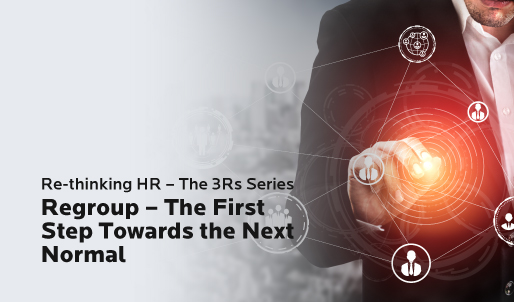In my last article, I wrote about potential problems caused by making workforce changes at the speed of COVID-19. Many of those choices, we are all aware, were made in a rather subjective manner without the benefit of a robust analysis of a sufficiently broad set of facts.
Regroup - The First Step Towards the Next Normal
Today let’s take the first step in moving toward the next normal while evaluating the changes made thus far. Let’s regroup.
To head down that path we need to review the changes we made and what we based those on. We need to reevaluate, to scrutinize, those choices based on the current and foreseeable impacts to our organization.
Some questions to consider:
- Have we obtained the projected cost avoidance, or have we encountered detrimental opportunity costs as a result?
Did we have to close a line, discontinue a service, which we had not planned?
Do customers still have the same level of trust and confidence?
The HR Frontline: Certain Outcomes in Uncertain Times
- Are we meeting the reset expectations of our investors, the analysts?
Have we lost market share?
- Can we sustain the staffing changes made and continue to meet customer demands?
Staffing includes:
Jobs/Roles & numbers of persons
Work location (remote/home, plant/office)
Skillset & skill level required
Institutional knowledge
Process participants
Workflow
Approvals
On-boarding
Training
- Are remaining personnel bearing the weight of expanded responsibilities?
- Have processes been considerably slower to complete?
Improperly completed
Left undone
- Are we experiencing more sick days, unplanned days/shifts off?
- Is attrition higher than normal?
The answers to these questions, among many, will help us to identify what might have gone/or is going wrong. They also give us information as we continue to adjust. As my musings are about HR and not Finance, I’ll leave a deeper discussion of the first 2 to those pros.
As to the third and fourth questions, let’s continue to Regroup!
When making the staffing changes required (other than the closure of a portion of the business) typical organizations would have considered:
- Organization Chart (Position and/or Hierarchy)
- Job/Role and numbers of people in them
- Having chosen which to adjust, listed people reviewed by
Salary
Past performance, probably only the most recent review
Raving fan letters / Personal improvement plans
Yet do these criteria merit jurisprudence? Wouldn’t we have other important information needed to make the best decisions? Let us understand these further.
As I mentioned in the earlier article Succession Planning processes and data have weight in these decisions. However, many organizations will not have even the “universal standard” data on many of those which were or are being considered for furlough.
Universal Standard data for Succession are:
- Impact of loss
- Risk of loss
- Performance
- Key/Critical role
- Potential Successor for who/which role(s)
- Possible Successors for the current role
If those data exist for Senior Staff, we argue they should exist through at least the 1st level of supervisor. Yet, on their own they leave important, potentially results altering data out of the picture.
Recommended expansions to data to be considered:
- Is this employee’s manager one who is a tough rater of performance?
- Are there increased days/shifts missed by others for the same manager?
- Does the manager’s group have higher attrition or disciplinary actions?
- Is this individual a key person (not to be confused with key role/job)
- Tenure in the role and with the company
- Date of last promotion, last pay raise
We see marked value in making these updates and advise they too be made:
Modify the "at-a-glance" data on your Position Org Chart
- To the number of seats on a position, we say add the filled (or open) count
Each manager should see this for those roles within their purview
This count should be of those “available or open/approved to hire”
- Drilling down should show where the incumbents are currently staffed
Again, this should carry the seats filled and open in that business unit
- Drilling into an incumbent should additionally show
Currently required job competencies and current proficiency
Currently required job skills current level and proficiency
- Be able to drill into the Job competencies and skills with weighted priority
There are many more items that can and should be considered when evaluating workforce changes. You can find other examples/suggestions here in my first article of this series. Also not yet discussed are the necessary data interactions across all aspects of your HCM solution, nor the depth and breadth of People Analytics and HR Metrics to consider.
Hopefully, this article has inspired some thoughts, provided some insights, and stirred some to actions.
For more discussion please look to my upcoming articles on the remaining R’s (restructure and regroup).
In the interim Birlasoft is conducting a survey to foster thought and instigate changes of what is used to affect HR decisions. The findings and recommendations will be shared with participants.
Take the survey to receive 2 hours of fee-free consultation to further review and discuss this topic with our experts, you do not have to give the name of the company that you work for in the survey but you must be working for a company or a Group of Affiliated Companies that has over 1000 employees.
In closing let me ask again and are your answers still the same?
Do you have the data you need to make the right workforce choices?
Can your recent decisions carry you through to the "Next Normal"?
"The world hates change, yet it is the only thing that has brought progress."
---Charles Kettering
---Charles Kettering
Recommended
SAP | 3 min Read



